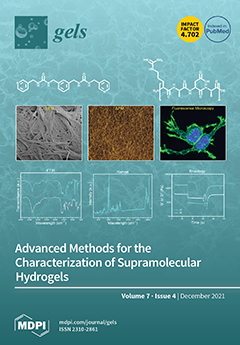Dehydration during exercise has been shown to limit performance. This study aimed to determine the best hydrocolloid for producing sports energy gel from chia seeds (
Salvia hispanica L.). This study was a completed random-design study using one factor: the addition of 0.1%
[...] Read more.
Dehydration during exercise has been shown to limit performance. This study aimed to determine the best hydrocolloid for producing sports energy gel from chia seeds (
Salvia hispanica L.). This study was a completed random-design study using one factor: the addition of 0.1%
w/w hydrocolloids (SEG1: xanthan gum; SEG2: pectin; and SEG3: carboxymethyl cellulose). A sports energy gel was then analyzed for pH, viscosity, total soluble solids, potassium content, and gross energy. The sensory characteristics that were analyzed include color, texture, aroma, and flavor, using hedonic tests on 25 panelists. The addition of different hydrocolloids resulted in significant differences in pH, viscosity, total soluble solids, potassium, and energy contents (
p = 0.026; 0.0001; 0.0001; and 0.0001). Differences in hydrocolloid types also led to differences in the panelists’ perceptions of the sports energy gels’ colors and textures (
p = 0.008 and 0.0001). The best formulation was the sports energy gel with added xanthan gum, which showed the highest average energy, total soluble solids, potassium, and viscosity values, and the lowest average of pH values (60.24 ± 0.340, 10.6 ± 0.08, 19.6 ± 0.23, 367.4 ± 9.81, and 5.2 ± 0.38, respectively). The conclusion is that chia seeds can be used as the main ingredient for producing a high-energy sports gel. Energy has a huge impact on a person’s physical and mental health.
Full article






